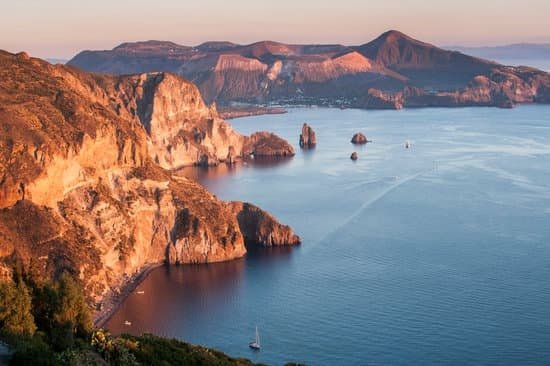Italy is one of the most popular travel destinations in the world, known for its rich history, stunning landscapes, and delectable cuisine. Whether you are a history enthusiast, a foodie, or simply seeking a romantic getaway, Italy has something to offer for every type of traveler. From the bustling streets of Rome to the picturesque canals of Venice, there is no shortage of breathtaking sights to explore.
The best time to travel to Italy largely depends on what kind of experience you are looking for. With its diverse climate and range of activities, Italy offers something special year-round. This article will guide you through the optimal times to visit this enchanting country and make the most out of your trip.
In this comprehensive guide, we will delve into not only when to visit Italy but also why each season offers its own unique charm. From the liveliness of peak tourist season to the tranquility of off-peak months, we will uncover the best times to explore everything Italy has to offer.
So whether you are eager to feast on authentic Italian cuisine or soak in the art and culture that defines this captivating destination, read on to discover how timing can make all the difference in your Italian escapade.
Weather Overview
Italy is a must-visit destination for travelers from around the world, offering a rich tapestry of history, culture, and natural beauty. When planning a trip to Italy, understanding the seasonal climate is crucial for creating the best travel experience. From the sun-drenched beaches of the Amalfi Coast to the snowy peaks of the Dolomites, Italy’s weather varies greatly depending on the time of year and region.
The weather in Italy can be divided into four main seasons: spring, summer, autumn, and winter. Each season brings its own unique charm and activities for travelers to enjoy. Spring (March to May) is a delightful time to visit Italy when the landscapes burst with blooming flowers and mild temperatures.
Summer (June to August) is peak tourist season in Italy when cities come alive with festivals and outdoor events. Autumn (September to November) offers pleasant weather and colorful foliage, perfect for exploring vineyards and hilltop towns. Winter (December to February) brings cooler temperatures and ski opportunities in northern regions.
To make it easier for travelers to plan their trip based on their weather preferences, here is an overview of what each season typically offers in terms of weather and activities:
- Spring: Mild temperatures ranging from 15°C to 20°C, perfect for sightseeing and outdoor activities
- Summer: Hot temperatures ranging from 25°C to 30°C, ideal for beach vacations and al fresco dining
- Autumn: Cool temperatures ranging from 10°C to 15°C, great for hiking and wine tasting
- Winter: Cold temperatures ranging from 0°C to 5°C in northern regions but milder around 10°C in central and southern Italy
Understanding the seasonal climate will help travelers make informed decisions about when is the best time to travel to Italy based on their preferred activities and weather conditions. Whether it’s basking in the Mediterranean sun during summer or skiing in the Alps during winter, there’s something for every type of traveler throughout the year.
Peak Season
When it comes to experiencing the vibrant energy of Italy, peak season is the ideal time to visit. The months of June to August are considered the best time to travel to Italy for those who want to immerse themselves in the lively atmosphere and bustling streets.
During this time, the country comes alive with festivals, events, and an infectious energy that is hard to resist. From sipping espresso in a bustling cafe in Rome to strolling through the vibrant markets in Florence, peak season offers an unforgettable Italian experience.
One of the key attractions during peak season is the Mediterranean coast, where visitors can bask in the warm sun and enjoy the beautiful beaches. The Amalfi Coast and Cinque Terre are particularly popular during this time, offering stunning views of the sparkling turquoise waters and colorful cliffside villages. Additionally, cities like Venice and Rome are at their liveliest during peak season, with an abundance of outdoor concerts, street performances, and cultural events that showcase the best of Italian heritage.
It’s important to note that while peak season offers a myriad of opportunities for excitement and cultural immersion, it also means larger crowds and higher prices for accommodations and attractions. However, for travelers who prioritize experiencing Italy’s vibrant energy at its peak, this is undoubtedly the best time to visit.
Off-Peak Season
Italy is arguably one of the most sought-after travel destinations, and for good reason. With its rich history, breathtaking landscapes, and delectable cuisine, Italy offers a unique experience for every traveler. While peak season may be the ideal time for some to visit, others may find that exploring Italy during quieter times has its own charm.
Visiting Italy during the off-peak season has its advantages. The lack of crowds allows for a more intimate experience with the country’s famous landmarks and hidden gems. Travelers can take their time exploring historic sites such as the Colosseum in Rome or the ancient city of Pompeii without feeling rushed or overcrowded. Additionally, quieter times mean shorter wait times at popular restaurants and local attractions, providing a more relaxed and authentic Italian experience.
The best time to travel to Italy during the off-peak season largely depends on personal preferences. Generally, the months of November to March are considered off-peak, with January and February being the quietest due to colder temperatures and fewer tourists.
However, this time frame offers unique opportunities such as experiencing Italy’s picturesque winter landscapes, participating in local winter festivals, and enjoying seasonal activities like skiing in the Alps. Ultimately, those who prefer a more tranquil environment may find that traveling to Italy during quieter times can provide a deeper connection to the country and its culture.
Festivals and Events
Italy is not only known for its stunning landscapes and rich history but also for its vibrant cultural celebrations throughout the year. From traditional parades to music festivals, there are numerous events that provide an immersive experience into Italian culture. Whether you’re a fan of art, music, food, or historical reenactments, Italy has something to offer for everyone.
Spring Festivals
During the spring season, Italy comes alive with a variety of festivals and events. One of the most famous is the Carnevale di Venezia (Venice Carnival) which takes place in February just before Lent. This iconic event features elaborate masks, colorful costumes, and grand masquerade balls, drawing visitors from all over the world. Additionally, Easter festivities such as processions and religious ceremonies are deeply rooted in Italian tradition and can be witnessed in cities and towns across the country.
Summer Music Festivals
Summer in Italy is synonymous with outdoor music festivals that cater to all genres and tastes. From classical concerts in historic amphitheaters like the Arena di Verona to modern rock and pop festivals such as Rock in Roma, there’s no shortage of live performances to enjoy. The Umbria Jazz Festival in Perugia and the Arena Opera Festival in Verona are also popular summer events that attract music enthusiasts from near and far.
Autumn Harvest Celebrations
The autumn months bring a different kind of celebration to Italy with various regional food and wine festivals held across the country. Visitors can immerse themselves in traditional grape harvest celebrations known as “sagras” where they can sample local wines, olive oils, cheeses, and other culinary delights while enjoying live music and entertainment. Notable events include the Fiera del Tartufo (Truffle Fair) in Alba and VinOtricolando wine festival in Tuscany.
With so many diverse festivals and events taking place throughout the year, it’s clear that Italy is a destination worth visiting at any time depending on individual preferences for cultural experiences.
Tourist Hotspots
When planning a trip to Italy, it’s essential to consider the best time to visit the country’s top tourist hotspots. Whether you’re drawn to the ancient ruins of Rome, the art and culture of Florence, or the romantic canals of Venice, each destination has an ideal time for exploration.
Top Attractions in Italy and When to Visit Them
- Rome: The Colosseum and Roman Forum are best visited in the spring (April – June) or fall (September – October) when the weather is mild and there are fewer crowds.
- Florence: The Uffizi Gallery and Duomo should be explored in the shoulder seasons of spring or fall to avoid long lines and scorching summer temperatures.
- Venice: The Grand Canal and St. Mark’s Square are most enjoyable in late spring or early fall when the city is less crowded, and you can experience pleasant weather for exploring on foot or by gondola.
For those seeking to visit these iconic attractions during less congested times, consider traveling during the off-peak season. These destinations still offer their enchanting charm without the overwhelming hordes of tourists. Additionally, visiting during festivals and events can provide a unique experience, such as seeing Rome’s ancient sites illuminated during summer evening openings or enjoying the Carnevale celebrations in Venice in February.
No matter which hotspot you choose to explore in Italy, planning your visit during the best time will ensure a more enjoyable experience without being overshadowed by large crowds or unfavorable weather conditions. Whether you prefer the hustle and bustle of peak season or a quieter adventure during off-peak times, Italy offers something splendid for every type of traveler.
Outdoor Activities
Italy is known for its stunning natural landscapes, from the rolling hills of Tuscany to the breathtaking Amalfi Coast. Each season offers a unique opportunity to explore the outdoor beauty of Italy, making it a year-round destination for nature lovers.
In the spring, Italy’s countryside comes alive with colorful blooms and lush vegetation. This is the perfect time to embark on hiking adventures and nature walks, taking in the picturesque scenery and enjoying mild temperatures. The months of April and May are ideal for visiting iconic locations such as the Cinque Terre or Lake Como, where you can enjoy outdoor activities without the summer crowds.
Summer in Italy provides endless opportunities for outdoor exploration, from sunbathing on the beaches of Sardinia to trekking in the Dolomites. With long daylight hours and warm weather, this season is perfect for water sports, mountain excursions, and exploring Italy’s national parks. However, it’s important to note that some regions can be quite hot during this time, so planning activities earlier or later in the day may be more comfortable.
Autumn showcases a different side of Italy’s natural beauty as the foliage changes color, creating a stunning backdrop for outdoor enthusiasts. This is an excellent time for wine tasting in vineyards across Tuscany and Piedmont or taking scenic drives through Umbria and Le Marche. Additionally, mountainous regions like the Alps offer great hiking opportunities with cooler temperatures compared to summer.
As winter arrives, snow-capped mountains become a haven for skiing and snowboarding enthusiasts. The Italian Alps and Dolomites attract visitors seeking winter sports adventures from December through February. Moreover, if you prefer milder climates but still want to experience Italy’s natural beauty in winter, regions like Sicily and Puglia offer pleasant temperatures along with stunning coastal landscapes.
| Season | Recommended Activities |
|---|---|
| Spring | Hiking in Cinque Terre or Lake Como |
| Summer | Beach activities in Sardinia; Trekking in the Dolomites |
| Autumn | Wine tasting in Tuscany; Scenic drives through Umbria |
| Winter | Skiing in Italian Alps; Coastal exploration in Sicily and Puglia |
Overall, Italy offers an abundance of outdoor activities throughout the year due to its diverse landscapes and climate variations across different regions. Whether you’re seeking adventure in nature or simply want to soak in stunning views, there’s always a perfect time to explore Italy’s natural beauty. Regardless of when you choose to visit this captivating country, unforgettable experiences await amidst its breathtaking scenery.
Local Cuisine
Italy is renowned for its delicious cuisine, and the best time to travel to Italy for a foodie adventure will depend on the seasonal produce and traditional dishes available in different regions. Italian cuisine varies greatly from north to south, with each region having its own specialties and culinary traditions.
Seasonal Produce
One of the best times to indulge in local Italian cuisine is during the spring and summer months when an abundance of fresh fruits and vegetables are available. This is when dishes like Caprese salad, made with ripe tomatoes, mozzarella cheese, fresh basil, and extra virgin olive oil, shine. In the fall, truffles are in season in regions such as Piedmont and Umbria, making it an ideal time to savor dishes that feature this delicacy.
Regional Specialties
Different regions of Italy have their own unique dishes and ingredients that are best enjoyed at specific times of the year. For example, the coastal areas are known for their seafood-based dishes, while inland regions boast hearty pasta and meat-based meals. Traveling during the best time to enjoy these regional specialties ensures that visitors can experience the authentic flavors of Italy at their peak.
Festive Seasons
During festive seasons such as Christmas or Easter, each region has its own traditional dishes that are prepared especially for these holidays. Visiting during these times allows travelers to immerse themselves in local celebrations and savor seasonal delicacies that are only available during these periods.
Whether it’s indulging in a slice of panettone during Christmas in Milan or feasting on a savory torta pasqualina during Easter in Liguria, the holiday seasons offer a special opportunity to explore Italy’s culinary traditions.
Budget-Friendly Options
Italy is a country filled with rich history, stunning architecture, and delectable cuisine, making it a must-visit destination for travelers. For those looking to explore this beautiful country without breaking the bank, there are several budget-friendly options to consider. From choosing the best time to travel to taking advantage of cost-saving tips, experiencing Italy on a budget is entirely possible.
The best time to travel to Italy on a budget is during the off-peak season, which typically falls between November and March. During this time, tourist numbers are significantly lower, leading to more affordable accommodations and airfare. Additionally, many attractions offer discounted or even free admission during the off-peak season, allowing budget-conscious travelers to experience Italy’s top sights without spending a fortune.
In addition to visiting during the off-peak season, there are other ways to save money while traveling in Italy. Opting for public transportation instead of taxis, enjoying picnics in parks instead of dining out for every meal, and seeking out free or low-cost cultural activities can all help stretch your travel budget.
With careful planning and consideration of the best time to visit Italy from a financial perspective, travelers can enjoy all that this remarkable country has to offer without overspending.
| Best Time to Travel | Budget-Friendly Tips |
|---|---|
| Off-Peak Season (November-March) | Lower Accommodation Costs and Airfare; Discounted Admission |
| Use Public Transportation | Affordable Dining Options; Seek Out Free Activities |
Conclusion
In conclusion, Italy truly is a must-visit destination for travelers seeking a rich cultural experience, breathtaking scenery, and delectable cuisine. With its diverse range of attractions, from historic landmarks to coastal towns and mountainous regions, there is something for every type of traveler to enjoy. Understanding the seasonal climate in Italy is crucial for determining the best time to visit based on individual preferences and interests.
For those who thrive on vibrant energy and bustling streets, the peak season from late spring to early fall is ideal. This is when Italy comes alive with outdoor events, lively festivals, and endless opportunities for sightseeing.
On the other hand, travelers looking to explore the quieter charm of Italy may prefer visiting during the off-peak season in late fall or winter. During this time, they can enjoy a more tranquil experience while still being able to appreciate the beauty of Italy without the crowds.
Whether it’s indulging in regional dishes during food festivals, exploring natural wonders through outdoor activities, or immersing oneself in cultural celebrations throughout the year, there are plenty of opportunities for unique experiences in Italy. By considering various factors such as weather preferences and budget constraints, travelers can make informed decisions about the best time to travel to Italy based on their specific interests and priorities. Ultimately, each season offers its own distinct allure and delights for visitors to savor.
Frequently Asked Questions
What Is the Best Month to Go to Italy?
The best month to go to Italy is typically in the spring or fall. During these times, the weather is mild, and there are fewer tourists, allowing for a more pleasant experience exploring the country.
What Are the Cheapest Months to Go to Italy?
The cheapest months to go to Italy are usually during the off-peak seasons of November through March. During these months, airfare and accommodation prices tend to be lower, making it a more budget-friendly time to visit.
What Month Has the Least Tourists in Italy?
The month with the least tourists in Italy is generally November. As it falls within the off-peak season, many tourists opt for warmer months to visit, resulting in fewer crowds and a more peaceful ambiance for exploring popular attractions.

I’m a passionate traveler, writer, and Italophile. My fascination with Italy’s history, art, and culture has led me on countless adventures across the Italian landscape. Through “I Live Italy,” I share my love for this extraordinary country and aims to inspire others to explore its boundless beauty.





